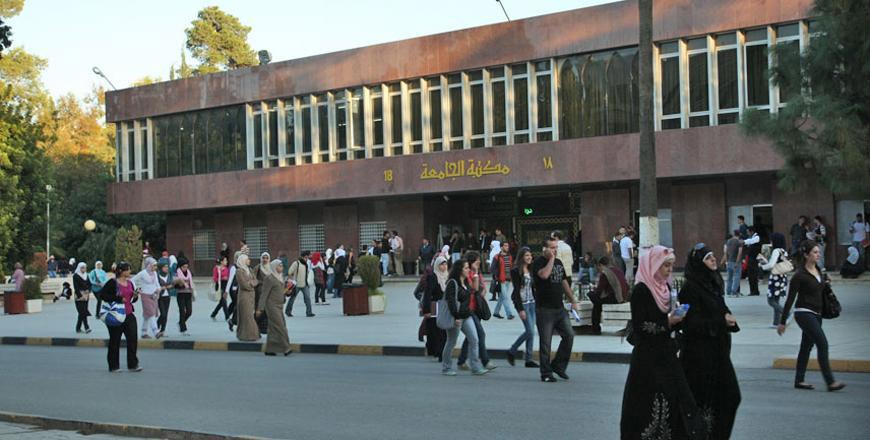You are here
Three Jordanian universities among top 28 academic institutions in Arab world
By Rana Husseini - May 19,2017 - Last updated at May 19,2017

Three Jordanian universities were ranked among the top 28 academic institutions in the Arab world, according to Times Higher Education’s ranking for 2017 (File photo)
AMMAN — Three Jordanian universities are among the top 28 academic institutions in the Arab world, according to Times Higher Education’s ranking for 2017.
The findings were published last week in the Times Higher Education’s 2017 Arab world university ranking of members of the Arab League, in which three Saudi universities dominated the top three spots.
The three Jordanian universities featured in the rankings included the Jordan University of Science and Technology (8), the University of Jordan (19) and the Hashemite University (23).
In the region, eight Egyptian universities featured in the table, four Saudi institutions which are all ranked in the top 10, while Jordan, Morocco and the United Arab Emirates each have three universities in the rankings.
The Times Higher Education World University Rankings are the only global performance tables that judge research-intensive universities across all their core missions: teaching, research, knowledge transfer and international outlook, according to their website. (https://www.timeshighereducation.com/world-university-rankings/methodology-world-university-rankings-2016-2017).
The performance indicators are grouped into five areas, according to the website, which includes teaching (the learning environment), research (volume, income and reputation), citations (research influence), international outlook (staff, students and research) and industry income (knowledge transfer).
Higher Education Minister Adel Tweisi commended the ranking results, saying that "it is proof that Jordanian universities are working hard to advance in ranking and education performance.”
“It is clear that all Jordanian universities are working to improve their performance, scientific research, innovations and patents,” the minister told The Jordan Times.
He added that he was hopeful that “the achievements made by the three universities will push them, and push others, to continue to work on improving the quality of education, scientific research and ensure providing degrees and classes that help employability and competitiveness in the labour market”.
Former education minister Labib Khadra echoed Tweisi’s remarks regarding filling the gap in the labour market.
“Jordanian universities should not strive for ranking as such, but rather should focus on the quality of education,” Khadra told The Jordan Times.
"It is good that there are universities with high rankings based on the survey on Arab universities," Khadra added, but “what we really need is for universities to plan their curriculum and classes in a qualitative manner that would help the local market’s needs.”
The former minister said that the unemployment rate in Jordan is around 30 per cent “and there is a clear gap between what the labour market needs and the type of majors the graduate students hold when they graduate”.
“The rankings of Jordanian universities to me will remain artificial until the Jordanian universities focus on the market’s needs to minimise the rate of unemployment,” Khadra stressed.
Jordanian education experts said earlier this year that improving the ranking of Jordanian universities in international rankings requires promoting a culture of applied scientific research at higher education institutions
The education experts told The Jordan Times in January that there is room for improving the overall performance of Jordanian universities in worldwide rankings, if challenges are addressed properly.
Commenting on the performance of Jordanian universities in scientific research, officials and experts have said that the majority of research conducted is theoretical, highlighting the need for applied research that helps achieve development and address issues of national priority.
The experts’ comments were made following the disappointing results of a 2016 Shanghai ranking of 500 universities worldwide, which did not include a single Jordanian university.
Others attributed the poor ranking of Jordanian universities in these indexes as the result of failures to address several challenges facing scientific research, including insufficient human resources and funds, as well as legislative impediments.
The experts stressed that the education sector needs a comprehensive strategy to update regulations governing scientific research into more flexible rules, increase funds from the private and public sectors, allow the establishment of specialised research centres, facilitate networking among researchers and academics, as well as incorporate a culture of scientific research at the school and undergraduate levels.
In September, Their Majesties King Abdullah and Queen Rania attended the launch of the National Strategy for Human Resources Development (NCHRD), which focused on developing the education sector in the Kingdom and human resources in general.
The NCHRD committee was formed in April 2015, after King Abdullah sent a letter to then-prime minister, Abdullah Ensour, highlighting the urgent need for Jordan to develop an integrated, comprehensive, strategic and well-defined system for human resources development.
In the letter, the King said the committee should prepare a national strategy, from which a 10-year plan could be drawn to develop several sectors.
The plan deals with developing elementary education, higher education, technical education and vocational training sectors with the purpose of achieving a qualitative leap in human resources.
The committee’s mandate is compatible with the expected outcomes of the economic vision 2015-2025 and the executive national strategy for employment.
The launch was seen as the beginning of a comprehensive development of human resources according to executable programmes and plans and clear measuring units, which are yet to be approved by the Cabinet.
The NCHRD, which provided the strategy, recommended working on interconnected sets of reform-related solutions to be implemented according to a priority scale and a set timeframe, as far as available funding options and economic conditions allow.
Related Articles
AMMAN — Improving the ranking of Jordanian universities in international ranking indices requires promoting a culture of applied scientific
AMMAN — In a bid to enhance national and international competitiveness, the Higher Education Accreditation Commission (HEAC) on Monday launc
AMMAN — The Higher Education Council on Thursday approved the allocation of JD72 million for the support of public universities during the y











